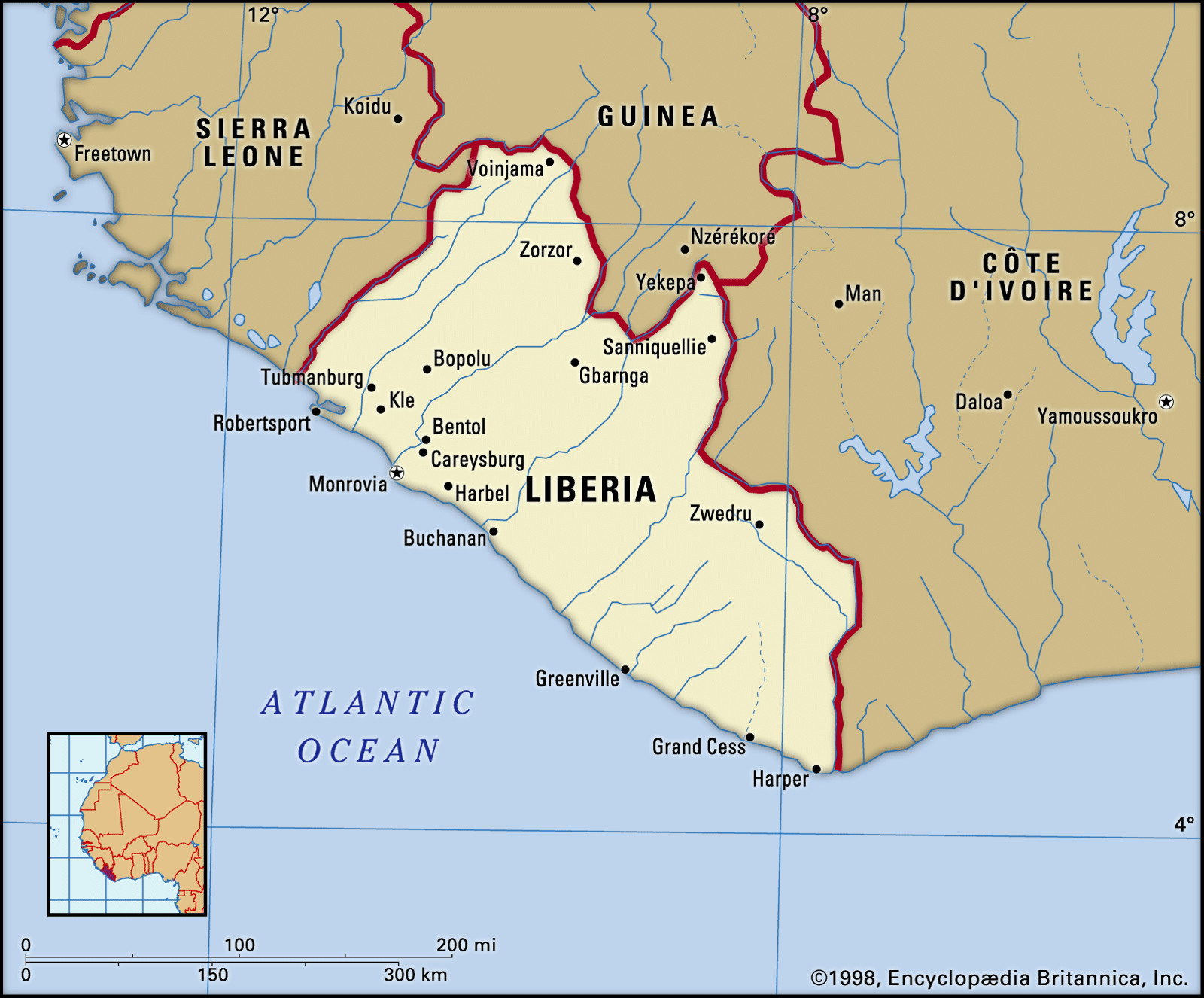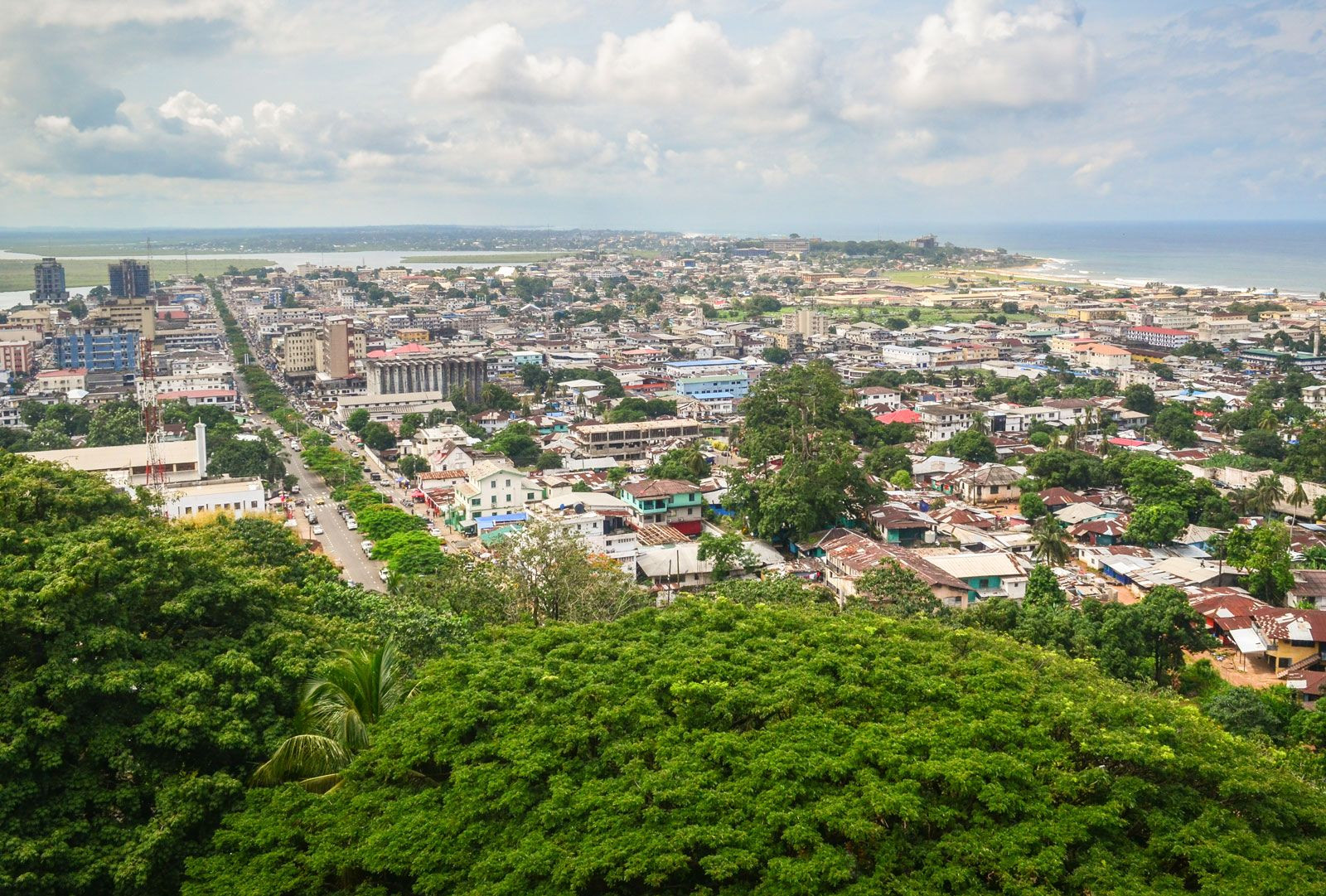Liberia, a nation steeped in history and rich in natural beauty, is located on the western coast of Africa. Often referred to as Africa’s oldest republic, it holds a unique place in the continent’s narrative. But exactly Where Is Liberia? Let’s delve into the geographical details of this fascinating country.
Discovering the Geographic Location of Liberia
Liberia is situated in West Africa, bordering the North Atlantic Ocean to its southwest. Its coastline stretches for approximately 350 miles (560 kilometers), marked by sandy plains, lagoons, and mangrove swamps. Inland, the terrain gradually rises into rolling hills and a dissected plateau, showcasing a diverse landscape within its relatively compact area.
Liberia in the West Africa Context
To pinpoint where is Liberia more precisely within West Africa, it’s helpful to consider its neighboring countries. Liberia shares borders with:
- Sierra Leone to the northwest
- Guinea to the north
- Côte d’Ivoire to the east
This strategic location places Liberia firmly within the West African region, a vibrant area known for its cultural diversity, historical significance, and varied ecosystems.
Borders and Key Geographical Features
Liberia’s boundaries are not only defined by neighboring countries but also by natural geographical features. Several rivers play a crucial role in delineating its borders:
- The Mano River and Morro River in the northwest form parts of the border with Sierra Leone.
- The Cavalla River in the east and southeast marks a significant portion of the boundary with Côte d’Ivoire.
These rivers, along with others like the Lofa, St. Paul, St. John, and Cestos, not only define borders but also shape the landscape and drainage systems of Liberia.
 Map of Liberia highlighting its location in West Africa and bordering countries.
Map of Liberia highlighting its location in West Africa and bordering countries.
Key Facts to Understand Liberia’s Place
Beyond simply asking “where is Liberia,” understanding some key facts enhances our appreciation of its location and significance.
- Unique History: Liberia stands out as the only Black state in Africa that was never colonized. It was founded by the American Colonization Society in the 19th century as a haven for formerly enslaved people from the United States. This history deeply influences Liberia’s identity and its relationship with the Americas.
- Monrovia: The Capital City: The capital of Liberia is Monrovia, located on the coast at Cape Mesurado. Named after U.S. President James Monroe, Monrovia is the country’s largest city and a major port.
- Diverse Terrain: As mentioned, Liberia’s landscape varies from coastal plains to inland plateaus and highlands. Mount Nimba, situated in the northern highlands along the Guinea frontier, is a striking feature and the highest point in the region.
- Climate and Environment: Liberia experiences a tropical climate with a distinct rainy season (May to October) and dry season (November to April). This climate supports lush rainforests, rich biodiversity, and a variety of plant and animal life.
 Aerial view of Monrovia, the capital city of Liberia, situated on the coast.
Aerial view of Monrovia, the capital city of Liberia, situated on the coast.
Exploring Liberia’s Landscape and Environment
The geographical location of Liberia directly contributes to its diverse environment and natural resources.
Varied Relief and Regions
Liberia can be broadly divided into four parallel physiographic regions running from the coast inland:
- Coastal Plains: Sandy and low-lying, characterized by beaches, lagoons, and mangrove swamps.
- Rolling Hills: Inland from the coastal plains, a region of rolling hills suitable for agriculture and forestry.
- Dissected Plateau: The majority of the interior consists of a plateau with scattered low mountains.
- Northern Highlands: Along the Guinea border, a mountainous region featuring Mount Nimba.
This varied relief impacts everything from agriculture and settlement patterns to climate and biodiversity.
Climate and Biodiversity Hotspot
Liberia’s location in West Africa places it within a region of significant biodiversity. The tropical climate supports:
- Rainforests: Lush rainforests are home to valuable trees like teak, mahogany, and rubber, as well as diverse flora and fauna.
- Animal Life: While populations faced challenges during civil conflicts, Liberia is home to animals like pygmy hippopotamuses, chimpanzees, monkeys, and various reptiles and birds. Conservation efforts and national parks like Sapo National Park are crucial for protecting this biodiversity.
 Mount Nimba highlighting the mountainous terrain in the northern part of Liberia.
Mount Nimba highlighting the mountainous terrain in the northern part of Liberia.
Conclusion: Liberia’s Distinctive Location
In conclusion, “where is Liberia?” The answer is that Liberia is strategically located in West Africa, bordering the North Atlantic Ocean and nestled between Sierra Leone, Guinea, and Côte d’Ivoire. Its unique history as Africa’s oldest republic, combined with its diverse geography, ranging from coastal plains to mountainous highlands, makes Liberia a country of significant interest and importance within the African continent. Understanding its location is the first step to appreciating its rich culture, history, and natural heritage.
